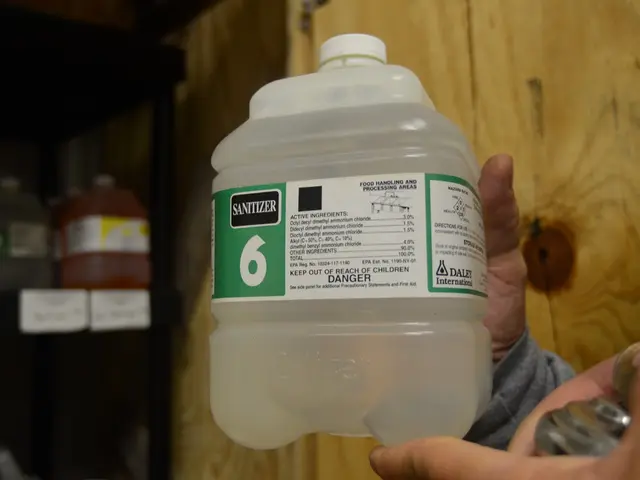Understanding When a Pet Requires an Ultrasound: Key Information Explained
Pet's Medical Mystery Unraveled: The Magic of Ultrasounds in Veterinary Care
Ever puzzled over what's going on inside your furry friend without resorting to Going TMI (Major Invasive Surgery)? Worry not, it's not witchcraft or guessing games - sometimes, it's ultrasound technology working its magic.
Ultrasounds are modern-day wonders in veterinary medicine. They help vets peer into your pet's insides in real-time, enabling easy diagnosis, reassurance, and quick treatment. But how can you recognize when Fido or Whiskers might be in need of one?
The Ultrasound Project: A Closer Look Inside
An ultrasound for pets operates on the same principle as those used by humans. It employs sound waves to generate images of what's happening within the body; the process is entirely non-invasive, causing no pain for your pet.
A tiny handheld device (or probe) is gently massaged over your pet's skin. The captured images show details of organs, blood flow, and even minute abnormalities that other tests, like X-rays, might overlook. Safe, swift, and reliable, ultrasounds afford a closer scrutiny without the need for surgery.
When Does My Pet Need a Peek Inside?
There are various circumstances when your vet may deem an ultrasound necessary. Some situations are routine, while others require immediate attention.
Here are some scenarios where you might find an ultrasound on the pet agenda:
Out-of-the-blue test results: Abnormal blood tests, such as odd liver enzymes or signs of infection, necessitate the vet examining the affected area to locate the problem.
Paw-wrenching stomach: Persistent vomiting or diarrhea could spell trouble, such as blockages or organ complications.
Losing weight surreptitiously: If your pet sheds kilos without any diet change, an ultrasound can pinpoint hidden causes like tumors or gastrointestinal disease.
Hidden hand: If a mysterious lump is detected during a routine physical exam, an ultrasound can determine its size, location, and impact on other organs.
Plumbing issues: Struggling to urinate, bloody urine, or frequent accidents may prompt an ultrasound to ensure the bladder and kidneys are functioning normally.
Hidden pregnancy: Ultrasounds can affirm pregnancy and keep tabs on unborn puppies or kittens.
Heart murmurs: Suspected heart disease may necessitate an echocardiogram, a special type of ultrasound that visualizes the heart in motion.
Warning Signs: Is My Pet Throwing Me a Curveball?
Sometimes, things aren't what they seem with pets. Pay attention to the following signs, which could indicate the need for veterinary intervention:
- Relentless vomiting or diarrhea
- Distended belly
- Lethargy or lack of appetite
- Sensitivity around the midsection
- Inconsistent breathing patterns
- Difficulty urinating
- Unexpected weight loss or gain
While these symptoms might not always signal a cause for alarm, persistent signs may necessitate a veterinary consultation.
Picture This! The Ultrasound Process
If your vet suggests an ultrasound, don't be alarmed. This non-invasive procedure is generally quick and stress-free for both you and your pet.
The process typically follows these steps:
- Hair removal: The area to be examined might be shaved to facilitate clearer images.
- Calm and comfortable: Your pet lies down quietly as the vet or technician moves the probe over the area of interest, while a special gel is used to improve image quality. A fidgety pet might receive mild sedation for detailed imaging, but this isn't always necessary.
- Results analysis: Once the images are captured, your vet can provide insights immediately or refer them to a specialist for further evaluation.
Ultrasound or X-ray: Battle of the Imaging Giants
Ultrasounds and X-rays serve unique purposes in pet diagnostics.
While X-rays excel at screening bones and spotting large masses, they aren't as effective in visualizing soft tissues. Ultrasounds, on the other hand, shine a light on abnormalities found within organs, specifically the liver, kidneys, spleen, and intestines.
In many cases, vets combine ultrasounds with X-rays for comprehensive assessments, matching the right tool to the job at hand.
The Bottom Line: Price Tag on Precision
Costs for pet ultrasounds vary based on factors such as your pet's size, region of examination, and whether a specialist is required. On average, you can expect to fork over a few hundred to several hundred dollars. Always request a ballpark figure beforehand to avoid nasty surprises.
Keep in mind that the upfront cost of an ultrasound often translates to savings in the long run by accelerating accurate diagnoses and preventing unnecessary treatments.
If your vet suggests an ultrasound and you feel uncertain, remember, this is not a cruel trick or an unnecessary expense. Ultrasounds help vets detect issues early, commence treatment promptly, and maximize your pet's chances of recovery, giving them a voice in the process. Always trust your gut instincts and seek advice from your vet when you have concerns or simply seek peace of mind.
In the context of the given text, here are the two sentences containing the words 'patterns', 'science', and 'health-and-wellness':
- Ultrasound technology in veterinary medicine is an application of sound wave patterns in medical science, contributing significantly to your pet's health-and-wellness.
- By analyzing the detected patterns, veterinarians can identify numerous health issues that, if not addressed promptly, might disrupt the wellness and overall quality of life of your companion animal.








